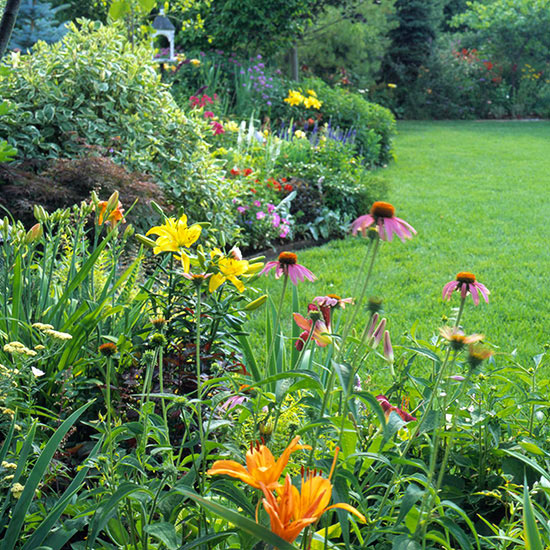






Getting your mower ready: Start the lawn-care season by taking care of your mower. Bring in your mower for service in early spring. This helps you beat the rush so your mower is in tip-top shape right when you need to use it. Be sure to sharpen the blade at least once a year.
Save Money and Sharpen Your Lawn Mower Blade Yourself
continue reading belowStart your lawn from seed: Though fall is the best time to start a new lawn from seed, you can also do it in spring. Don't wait for late spring; your lawn needs to get established before summer heats up.
More About Overseeding Your Lawn
Stop crabgrass: Crabgrass and other annual weeds need to grow from seed each year, so a well-timed application of pre-emergence herbicide can stop them in their tracks. Spread the pre-emergence herbicide as forsythia blooms in your area start to drop.
Aerate your lawn: If your lawn doesn't grow well because of hard, compacted soil, aerate it in spring (when your grass is actively growing).
Start mowing: Bring out the lawn mower when your grass grows about 3 inches tall. Keep most grasses at least 2 inches tall -- this height helps the grass ward off weeds and withstand summer drought.
First feeding: If you feed your lawn a couple of times a year, a light application of lawn food in early spring will help get your grass off to a great start. Keep it light and use a slow-release or organic fertilizer. Wait to fertilize until your lawn needs mowing for the first time. Feeding your lawn too early is just a waste of money.
Use a grub control: If grubs are an issue, spread a grub-control product that continues to work through the season. The best time to do this is in early June.
Keep mowing: With summer heat, your grass is probably going to slow down a little. During hot, dry periods, it may only need mowing once every two or three weeks (wait for it to grow about 3 inches tall). During cooler, moister weather patterns, mow enough to keep it from getting more than 3 inches tall -- that could be every week or more than once a week.
Watering smarts: If you want to keep your water bills under control, let your grass go dormant during drought. It will become brown, but it will stay alive. When the rains come again, it'll turn green and start growing. If you don't like the look of a brown lawn, select drought-tolerant types such as buffalograss or give your lawn about 1 inch of water a week.
Fertilizing: If you only feed your lawn once a year, autumn is the best time to do it. In fact, your lawn could take a light application of fertilizer in early fall and again in late fall.
More mowing: It seems like it never ends: As temperatures cool, your lawn will grow faster. You'll likely need to mow regularly through the end of the season.
Cleanup time: It's a good idea to clean up fallen leaves. If you don't want to rake them up, run your lawn mower over your lawn two or three times. This chops the leaves into fine pieces so they decompose and add to your soil's structure. Otherwise, rake up and compost the fallen leaves.
Overseeding: Most grasses in the Midwest grow best when it's under 75 degrees F. -- making autumn the ideal time to overseed. Be sure to give your new grass about a month before your first average first frost so it can get established.
More About Overseeding Your Lawn
Find your average first frost date
Aerating: Cooler autumn temperatures mean your grass will start growing more again -- so it's a great time to aerate to loosen compacted soil.
Go after perennial weeds: Most perennial lawn weeds are most susceptible to attack in fall when they're winding down and getting ready for winter. Tackle them with a broadleaf herbicide or pull them by hand.
More About Stopping Weeds
What is best grass for midwest...
What is the Best Riding Mower for Hills?
Choosing The Best Underground Lawn Irrigation System for Your Lawn
How To Choose the Right Artificial Grass For Your Lawn
Start In The Fall For a Great Spring Garden
The Best Way to Buy Grass for Your Lawn
Pacific Northwest Lawn-Care Calendar and Lawn Maintenance Tips
Copyright © www.100flowers.win Botanic Garden All Rights Reserved